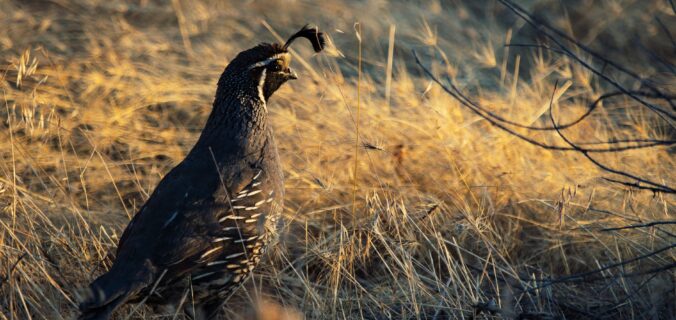If you’re considering raising quail on your farm or homestead, one of the first things you’ll need to do is choose a breed. There are many different quail breeds to choose from, each with its own unique characteristics and traits. As someone who has raised multiple breeds of quail over the years, I want to share with you a guide to choosing the best quail breed for your farm.
Coturnix Quail
Coturnix quail, also known as Japanese quail, are the most common breed of quail raised in the United States. They are small and easy to handle, making them a great choice for those who have limited space or who are new to raising poultry. Coturnix quail are also incredibly efficient egg layers, producing up to 300 eggs per year. They are hardy and disease-resistant, making them easy to care for. The Coturnix quail are versatile and can be raised for both meat and eggs.
Bobwhite Quail
Bobwhite quail are a popular breed of quail for hunting and meat production. They are slightly larger than Coturnix quail and have a distinctive white and brown speckled pattern. Bobwhite quail are not as efficient egg layers as Coturnix quail, but they make up for it in their delicious meat. They are also hardy and can tolerate a wide range of temperatures and weather conditions.
Gambel’s Quail
Gambel’s quail are native to the southwestern United States and are a popular game bird. They are larger than Coturnix quail and have a distinctive plume of feathers on their head. Gambel’s quail are not typically raised for egg production or meat, but rather for their beauty and as a game bird. They require a larger living space than other breeds of quail and prefer a dry, arid environment.
California Quail
California quail are another popular game bird that are native to the western United States. They are similar in size and appearance to Gambel’s quail, but have a distinctive black plume on their head. California quail are not typically raised for egg production or meat, but rather for their beauty and as a game bird. They are hardy and can tolerate a wide range of temperatures and weather conditions.
Button Quail
Button quail, also known as Chinese painted quail, are the smallest breed of quail. They are typically raised for their beauty and as a pet, rather than for egg production or meat. Small living spaces are required for button quails, and they can be kept in pairs or small groups. They are not as hardy as other breeds of quail and require a warm, dry environment.
When choosing a quail breed for your farm, there are several factors to consider. Here are a few things to keep in mind:
Factors to consider
- Purpose: What is your main reason for raising quail? Are you raising them for meat, eggs, or as a game bird?
- Space: How much space do you have available for your quail? Some breeds require more space than others.
- Climate: What is the climate like in your area? Some breeds of quail are more tolerant of cold or hot temperatures than others.
- Availability: What breeds of quail are readily available in your area? Some breeds may be harder to find than others.
Once you’ve considered these factors, you can begin to narrow down your options and choose the best quail breed for your farm. It’s important to do your research and learn as much as you can about the breed you choose. Be prepared before bringing your quail home by knowing the characteristics and care requirements of each breed.
In conclusion, there are many different quail breeds to choose from, each with their own unique characteristics and traits. When choosing a quail breed for your farm, it’s important to consider your goals, available space, and climate. Whether you’re looking to raise quail for their delicious eggs or their flavorful meat, there is a quail breed that is right for you. With a little research and preparation, you can successfully raise quail on your farm and enjoy the many benefits that these amazing birds have to offer.
